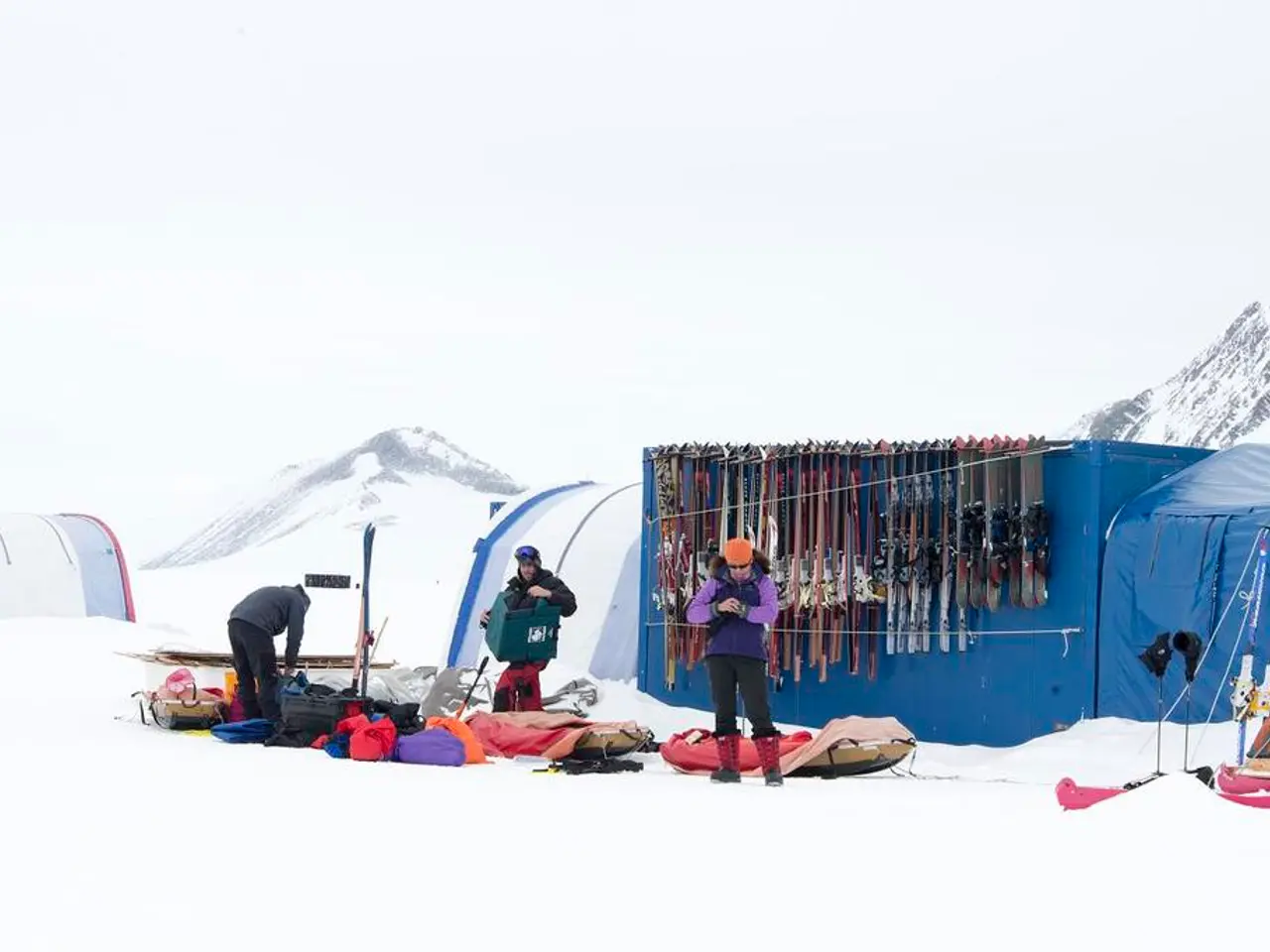Keep an Eye Out for Spring Valley Floor Avalanches
Spring Avalanches Pose Increased Risk in New Zealand's Southern Alps
Springtime in New Zealand's Southern Alps is ushering in a heightened risk of avalanches, primarily due to warmer temperatures and increased rainfall[1]. These conditions can lead to larger avalanches than those typical in winter, posing a risk to outdoor enthusiasts and mountaineers[4].
Heavy rainfall has already soaked the snowpack, and more is expected over the next seven days, as spring-like westerly fronts sweep across the country[2]. These fronts are forecast to generate significant precipitation (rain/snow), rising freezing levels, and strong winds[2]. As a result, several large avalanche cycles are anticipated through this period[1].
The risk of avalanches running to the valley floor is higher this year compared to previous years[1]. This increased risk is partially due to the Persistent Weak Layer (PWL) present in much of the Southern Alps[1]. If an avalanche is triggered, it may awaken this PWL, low in the snowpack, resulting in a larger-than-usual avalanche[1].
Outdoor enthusiasts and mountaineers should be aware of the springtime avalanche risk due to rain and warming temperatures[4]. Monitoring local weather conditions, particularly after heavy rainfall or rapid snowmelt, can help predict avalanche danger[4]. The New Zealand Mountain Safety Council advises extra caution in spring due to increased avalanche size and risk from these changing conditions[4].
Using updated regional avalanche forecast information and avalanche bulletins helps plan safer routes[4]. The central Southern Alps, where most avalanches and microearthquakes are studied, is an active, tectonically complex alpine area prone to extreme weather[1]. Avalanche forecasts and warnings are typically provided by local authorities and organizations such as the New Zealand Avalanche Advisory, informed by ongoing monitoring of snowpack stability, weather patterns, and seismic activity[1].
If traveling to areas without a regional avalanche forecast, follow the advice of the closest region[4]. It is also advised to pay attention to what is above you, where you are stopping or camping, and to follow the advice on www.avalanche.net.nz[4].
In summary, a very cautious approach to any valley travel is recommended over the next couple of weeks. Spring avalanches in New Zealand are mainly triggered by warming and rain causing snowpack instability, with glacier melt and rainfall playing significant roles in both avalanche triggers and related seismic activity. Regional forecast and caution are essential due to the dynamic interplay of weather and geological factors in the Southern Alps[1][2][3][4].
[1] Climate Change Research Institute, Victoria University of Wellington. (2021). "The impact of climate change on avalanche risk in New Zealand's Southern Alps."
[2] MetService. (2021). "Spring-like westerly fronts forecast for the next 7 days in New Zealand."
[3] GNS Science. (2020). "Microearthquake activity in the central Southern Alps linked to glacier melt and rainfall."
[4] New Zealand Mountain Safety Council. (2021). "Spring avalanche safety advice."
Avalanches in New Zealand's Southern Alps during spring are predominantly a concern for sports enthusiasts, such as mountaineers, due to the unstable snowpack caused by warming temperatures and increased rainfall. It is crucial for these individuals to monitor weather conditions and follow updated regional avalanche forecasts to plan safer routes.







